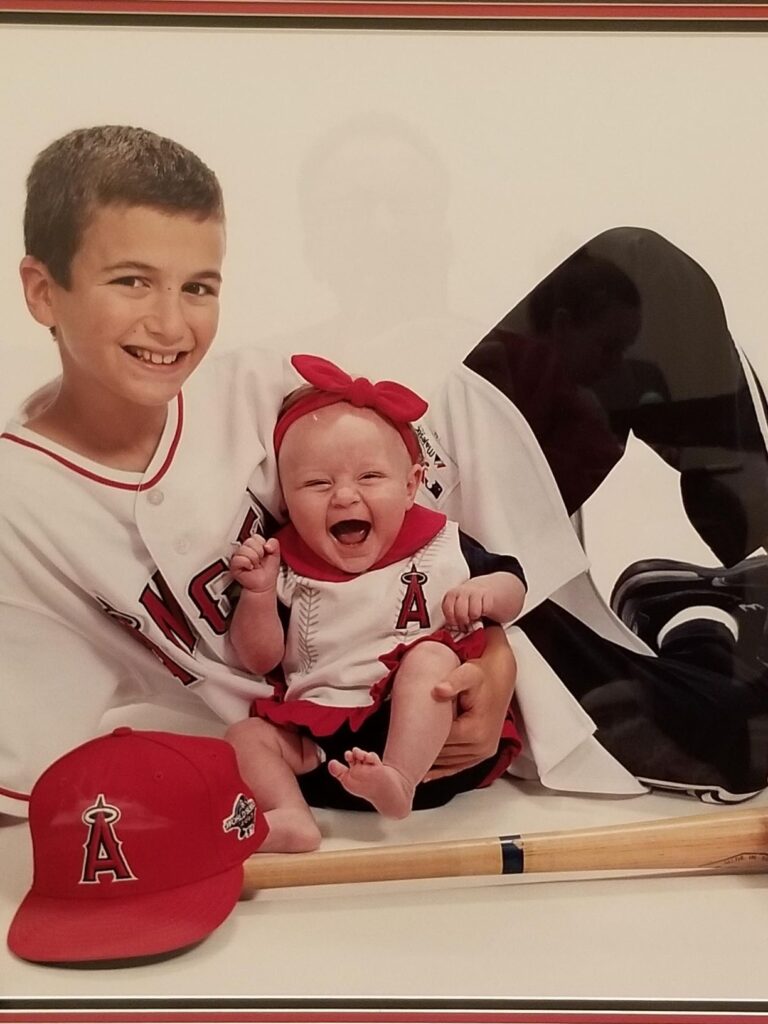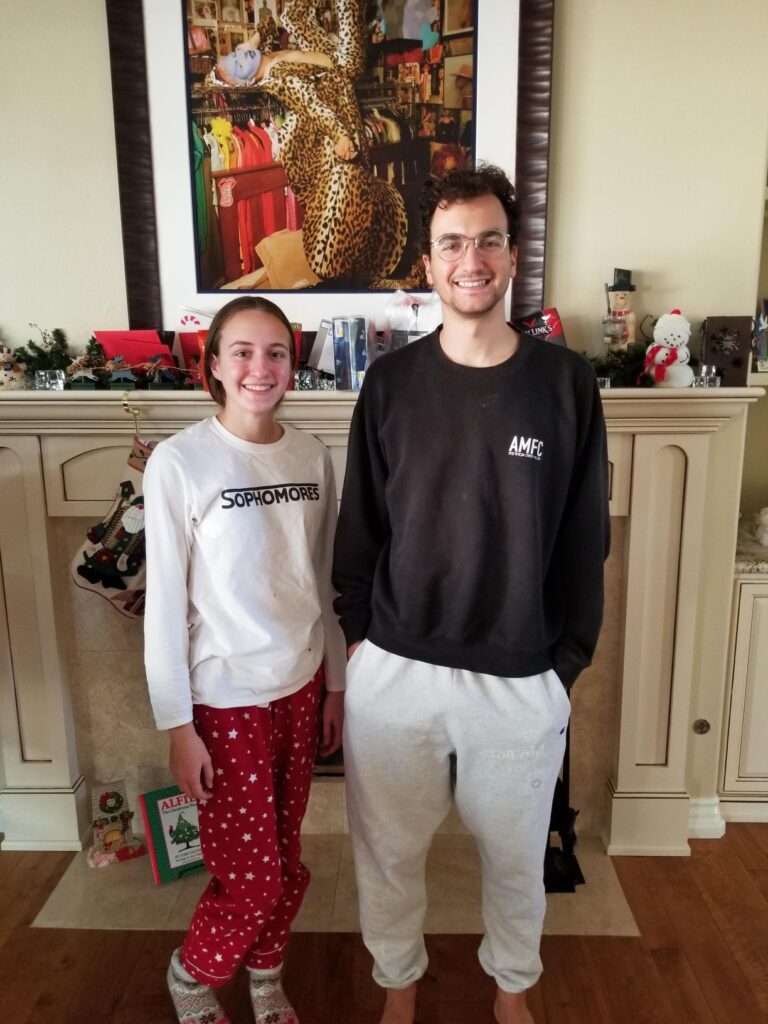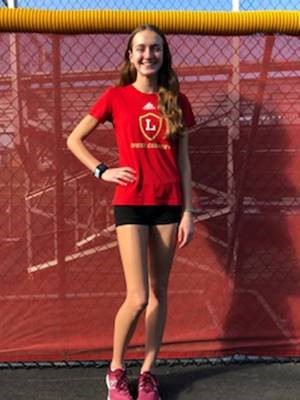She’s 16, She’s Beautiful, And She’s Mine
Ok, so I’ve taken a bit of license with Ringo Starr’s 1973 hit, You’re Sixteen. But, you’ll soon see why.
I’m calling this a TOHO update. This Only Happens Once. Almost like the YOLO that’s been popularized recently by the Wall Street Bets crowd (YOLO meaning, You Only Live Once).
There’s no market commentary, and not even a joke. Those will be back in two weeks. Simply put, this is a brief tribute to our daughter, Caroline Faith Kargenian, who will be 16 this Sunday, on Valentine’s Day. See below for the story. It’s pretty cool.
The Spring of 2004
To fully appreciate the story, a little background is necessary. Our son, Adam, was born in 1994. Four years later, my wife, Michelle, had a miscarriage. At that point, she was 38, and as many couples can attest, having a baby at that age or older isn’t necessarily just as simple as having sex. At age 40, we decided to go down the route of invitro fertilization, having decided that if it failed, at least we had tried. My wife will attest to this—I nearly passed out watching the video of how to administer the daily shots to her, which went on for 30 days if I recall. I was like, “I need to put that needle (it was long!) into your bum?” Yikes. I definitely struggled at first, until one day Michelle said, “Think of it like you’re throwing a dart at the dartboard.” Ha. Now she was speaking my sports language! That helped me become more proficient, and we ended up going through two rounds of fertility treatments, with no success.
Having a second child at that point became more like, out of sight, out of mind. We were still certainly blessed with our son, Adam. In the spring of 2004, though, Michelle was diagnosed with breast cancer. Several weeks into her pre-surgery process, she had to go in for an imaging procedure. The nurse asked her, “When was your last cycle?” Michelle said, “Well, I’m a day late, but so what? I’m almost 44.” The nurse replied, “Sorry, we need you to do a pregnancy test, as we can’t do this scan if you’re pregnant.” Well, guess what? She WAS pregnant.
This turned out to be an incredibly stressful time period. We had just started TABR in February 2004, moving clients over to Fidelity from Prudential, moving into new offices in May 2004 in the middle of this, and also having to change group medical plans in the middle of the diagnosis so Michelle could have the surgery done at St. Joseph’s Hospital in Orange, where we found a great team. She was dealing with breast cancer AND pregnancy. Thankfully, we’ve been blessed with great outcomes. And, we certainly know that doesn’t always happen. She had a mastectomy in the fall of 2004, and then had to get through the remaining months of pregnancy. Not so easy. Originally, she was to deliver the baby via a scheduled C-section on February 16, but a couple of weeks prior, the hospital called her and said they were too busy, that they had to re-schedule, and the only option was February 14, Valentine’s Day. And that is how our daughter became a Valentine’s Day baby.
For either my birthday or Christmas in late 2005, Michelle surprised me with this photo.
A lot has changed in nearly 15 years. Below is Caroline and older brother (26), Adam, at Christmas last December.
Finally, her 10 months of continuous training in cross country has earned her a spot on the Orange Lutheran varsity girls team (see below) as a sophomore, and they actually get to race against competition tomorrow for the first time since the Covid shutdowns last March.
As I’m sure many of you can attest who have both boys and girls as children, there’s something special about the Sweet 16 birthday for your daughter. And for us, having a Valentine’s birthday has been really neat. So, happy birthday to our daughter, Caroline Faith Kargenian (Faith was my wife’s idea given the story above). And, Happy Valentine’s Day to all of you, including the guys. Before this wraps, I’d also like to convey our thoughts and prayers for the many dear women in our life, including clients, friends and relatives who’ve had, and are dealing with breast cancer. It really never goes away. Fortunately, Michelle has been cancer free since Caroline was born. Indeed, a Sweet 16.
Sincerely,
Bob Kargenian, CMT
President
TABR Capital Management, LLC (“TABR”) is an SEC registered investment advisor with its principal place of business in the state of California. TABR and its representatives are in compliance with the current notice filing and registration requirements imposed upon registered investment advisors by those states in which TABR maintains clients. TABR may only transact business in those states in which it is notice filed, or qualifies for an exemption or exclusion from notice filing requirements.
This newsletter is limited to the dissemination of general information pertaining to our investment advisory/management services. Any subsequent, direct communication by TABR with a prospective client shall be conducted by a representative that is either registered or qualifies for an exemption or exclusion from registration in the state where the prospective client resides. For information pertaining to the registration status of TABR, please contact TABR or refer to the Investment Advisor Disclosure web site (www.adviserinfo.sec.gov).
The TABR Model Portfolios are allocated in a range of investments according to TABR’s proprietary investment strategies. TABR’s proprietary investment strategies are allocated amongst individual stocks, bonds, mutual funds, ETFs and other instruments with a view towards income and/or capital appreciation depending on the specific allocation employed by each Model Portfolio. TABR tracks the performance of each Model Portfolio in an actual account that is charged TABR’s investment management fees in the exact manner as would an actual client account. Therefore the performance shown is net of TABR’s investment management fees, and also reflect the deduction of transaction and custodial charges, if any.
Comparison of the TABR Model Portfolios to the Vanguard Total Stock Index Fund, the Vanguard Total International Stock Fund and the Vanguard Total Bond Index Fund is for illustrative purposes only and the volatility of the indices used for comparison may be materially different from the volatility of the TABR Model Portfolios due to varying degrees of diversification and/or other factors.
Past performance of the TABR Model Portfolios may not be indicative of future results and the performance of a specific individual client account may vary substantially from the composite results above in part because client accounts may be allocated among several portfolios. Different types of investments involve varying degrees of risk, and there can be no assurance that any specific investment will be profitable.
The TABR Dividend Strategy presented herein represents back-tested performance results. TABR did not offer the Dividend Strategy as an investment strategy for actual client accounts until September/October 2014. Back-tested performance results are provided solely for informational purposes and are not to be considered investment advice. These figures are hypothetical, prepared with the benefit of hindsight, and have inherent limitations as to their use and relevance. For example, they ignore certain factors such as trade timing, security liquidity, and the fact that economic and market conditions in the future may differ significantly from those in the past. Back-tested performance results reflect prices that are fully adjusted for dividends and other such distributions. The strategy may involve above average portfolio turnover which could negatively impact upon the net after-tax gain experienced by an individual client. Past performance is no indication or guarantee of future results and there can be no assurance the strategy will achieve results similar to those depicted herein.
Inverse ETFs
An investment in an Inverse ETF involves risk, including loss of investment. Inverse ETFs or “short funds” track an index or benchmark and seek to deliver returns that are the opposite of the returns of the index or benchmark. If an index goes up, then the inverse ETF goes down, and vice versa. Inverse ETFs are a means to profit from and hedge exposure to a downward moving market.
Inverse ETF shareholders are subject to the risks stemming from an upward market, as inverse ETFs are designed to benefit from a downward market. Most inverse ETFs reset daily and are designed to achieve their stated objectives on a daily basis. The performance over longer periods of time, including weeks or months, can differ significantly from the underlying benchmark or index. Therefore, inverse ETFs may pose a risk of loss for buy-and-hold investors with intermediate or long-term horizons and significant losses are possible even if the long-term performance of an index or benchmark shows a loss or gain. Inverse ETFs may be less tax-efficient than traditional ETFs because daily resets can cause the inverse ETF to realize significant short-term capital gains that may not be offset by a loss.
For additional information about TABR, including fees and services, send for our disclosure statement as set forth on Form ADV from us using the contact information herein. Please read the disclosure statement carefully before you invest or send money.
A list of all recommendations made by TABR within the immediately preceding one year is available upon request at no charge. The sample client experiences described herein are included for illustrative purposes and there can be no assurance that TABR will be able to achieve similar results in comparable situations. No portion of this writing is to be interpreted as a testimonial or endorsement of TABR’s investment advisory services and it is not known whether the clients referenced approve of TABR or its services.




